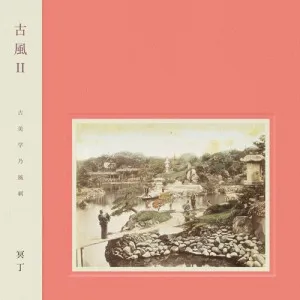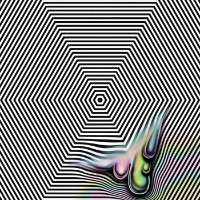- CD
- Recommended
- Back In
冥丁
古風 Ⅱ
Kitchen. Label
- Cat No: AMIP-0269
- updated:2022-02-02
日本の古い文化をモチーフにした唯一無二のオリジナリティーで、世界のエレクトロニック〜アンビエントシーンで脚光を浴びる広島在住のアーティスト冥丁が、2020年の傑作アルバム『古風』の続編をリリース。
Track List
「LOST JAPANESE MOOD」(失われた日本のムード)をテーマに、アンビエント・ミュージックやミュージック・コンクレートを融合させて、時とともに忘れ去られる日本の古い歴史の瞬間をノスタルジックな音の情景に再構築した3部作『怪談』『小町』『古風』で非常に高い評価を得てきた冥丁。前作『古風』をリリース後、冥丁は『古風』制作のために完成させたトラックがまだ47曲ほどあることに気づき、『古風』の世界観をさらに拡張しながら、より深く日本人のアイデンティティーについて思いを巡らせた本作『古風 II』を制作した。
アルバムは陽気な口笛から虫の音や和楽器などの賑やかなハーモニーで幕を開ける。続く「八百八町」(M-3)ではピッチシフトしたボーカル・サンプルやユニークなビートでかつての江戸の活気を表現し、メランコリックな雰囲気の「カヲル」(M-4)では、冥丁が亡き祖母に捧げたアルバム『小町』制作時のセッションを用いて彼女に送る最後のレクイエムを奏でている。アルバム後半の「茶寮」(M-10)では、一音一音が筆の運びのようなシンセ音の繰り返しの中に静けさを感じさせる。この曲は、冥丁が祖母の家で眺めていた水墨画からインスピレーションを得たもので、彼が以前訪れた茶室の印象と結び付けたという。「朽ち果てた土壁や色褪せた畳に感動を覚え、その小さな部屋に漂う宇宙的な時間の流れを音楽にしてみようと思った。」と冥丁は語る。また、非常にドラマチックな展開を見せる「黒澤 明」(M-11)では、日本の豊かな伝統と第2次世界大戦後の混乱を等しく描いた黒澤作品と深く共鳴している。
冥丁は長年に渡り、彼の思い描く日本らしさや日本人らしさを見つけ出そうとしてきたが、過去3枚のアルバムでその答えを求めた後、本作でさらに多くの疑問を投げかけている。過去を振り返ることで、より明確な現在を得ることができるのか?「LOST JAPANESE MOOD」をとらえた後、現代社会の中で日本はどこへ向かうのか?『古風Ⅱ』は、さまざまなムードと質感のある音の断片の中で、我々に過去との関係を見直すことを提案している。
アルバムは陽気な口笛から虫の音や和楽器などの賑やかなハーモニーで幕を開ける。続く「八百八町」(M-3)ではピッチシフトしたボーカル・サンプルやユニークなビートでかつての江戸の活気を表現し、メランコリックな雰囲気の「カヲル」(M-4)では、冥丁が亡き祖母に捧げたアルバム『小町』制作時のセッションを用いて彼女に送る最後のレクイエムを奏でている。アルバム後半の「茶寮」(M-10)では、一音一音が筆の運びのようなシンセ音の繰り返しの中に静けさを感じさせる。この曲は、冥丁が祖母の家で眺めていた水墨画からインスピレーションを得たもので、彼が以前訪れた茶室の印象と結び付けたという。「朽ち果てた土壁や色褪せた畳に感動を覚え、その小さな部屋に漂う宇宙的な時間の流れを音楽にしてみようと思った。」と冥丁は語る。また、非常にドラマチックな展開を見せる「黒澤 明」(M-11)では、日本の豊かな伝統と第2次世界大戦後の混乱を等しく描いた黒澤作品と深く共鳴している。
冥丁は長年に渡り、彼の思い描く日本らしさや日本人らしさを見つけ出そうとしてきたが、過去3枚のアルバムでその答えを求めた後、本作でさらに多くの疑問を投げかけている。過去を振り返ることで、より明確な現在を得ることができるのか?「LOST JAPANESE MOOD」をとらえた後、現代社会の中で日本はどこへ向かうのか?『古風Ⅱ』は、さまざまなムードと質感のある音の断片の中で、我々に過去との関係を見直すことを提案している。
Meitei’s 2020 album 'Kofū' was the bold bookend to an expedition, where sounds were first navigated and then subverted in 2018’s 'Kwaidan' and 2019’s 'Komachi'.
All three albums were Meitei’s attempt at immersive storytelling, reimagining moments of Japanese history he felt were being washed away – not least by the unforgiving sands of time – through wistful compositions that stretched across ambient music, hauntology, and musique concrete.
When it came to finalizing 'Kofū', Meitei found he was left with over 60 fully realized tracks, bursting with ideas that fired in divergent, curious directions. Meitei was content with the 13 tracks he had selected. But when it came time to begin his next album, he found that it had been sitting in front of him all along. He realized his work wasn’t over yet.
Meitei sounds right at home celebrating the past he first reimagined in his previous work. The merriment is palpable in its first two tracks of 'Kofū II' – a loop of cheery whistling amidst the clanking of wood leads into strings, cricket sounds and flutes, all united in bustling harmony.
'Happyaku-yachō' is where it comes into focus. Pitch-shifted vocal samples roam around in the crowded sonic field. “My image of this music is that it expresses the vibrant mood of Edo's merchant culture,” says Meitei, “where old Japanese dwellings were densely packed together in a vast expanse of land.” The affair becomes bittersweet as the track leads into the desolate 'Kaworu', a compositional piece lifted from his 'Komachi' sessions – a final requiem to his late grandmother.
The album is bursting with spectral vignettes of wandering samurais, red lanterns, ninjas, puppet theatres, poets, even a vengeful assassin ('Shura Yukihime', known to Western audiences as ‘Lady Snowblood’).
'Saryō' is as elegant and refined as you would expect. It induces stillness in its repetition, with each synth note a brushstroke. It was inspired by a Sengoku-era tea house he once visited, designed by national icon Sen no Rikyū. Meitei tied it to the reaction he felt while poring over the ink paintings in his grandmother’s house. “The decayed earthen walls and faded tatami mats gave me an emotional impression,” he says. “And the cosmic flow of time drifting in the small room. I decided to put my impression of this into music.”
In 'Akira Kurosawa', an appropriately thunderous track, Meitei finds deep resonance in his vast filmography, which drew equally from Japan’s rich heritage and troubled circumstances post-WWII.
'Kofū II' is not a leftovers album, nor is it a straightforward companion piece. In this album, Meitei has his biggest reckoning with the Japanese identity yet. Over the years, he has attempted to peel back what he believes has defined Japan and its people. After seeking answers with three full-length albums, his fourth poses more questions.
If his first three albums inspired a sense of longing – or, perhaps inevitably, fed an irreparable nostalgia doomed to history – Kofū II compels us to reassess our relationship with the past.
By constantly looking back, are we ever afforded a clearer present? After capturing the “lost Japanese mood”, where does that leave its country in the modern world? Meitei offers no immediate answers with 'Kofū II'. It forces you to sit with its disparate moods, to meditate amidst the textured fragments.
'Kofū II' will be released in 180g LP, CD and digital format on December 10, 2021 (LP expected to land January 28, 2022) via KITCHEN. LABEL. Both LP and CD format are presented in a debossed sleeve with obi strip and include a 16-page insert with words in Japanese and English from Meitei, printed on premium paper stock with design by KITCHEN. LABEL founder Ricks Ang, and is mastered by Chihei Hatakeyama in Tokyo, Japan.
All three albums were Meitei’s attempt at immersive storytelling, reimagining moments of Japanese history he felt were being washed away – not least by the unforgiving sands of time – through wistful compositions that stretched across ambient music, hauntology, and musique concrete.
When it came to finalizing 'Kofū', Meitei found he was left with over 60 fully realized tracks, bursting with ideas that fired in divergent, curious directions. Meitei was content with the 13 tracks he had selected. But when it came time to begin his next album, he found that it had been sitting in front of him all along. He realized his work wasn’t over yet.
Meitei sounds right at home celebrating the past he first reimagined in his previous work. The merriment is palpable in its first two tracks of 'Kofū II' – a loop of cheery whistling amidst the clanking of wood leads into strings, cricket sounds and flutes, all united in bustling harmony.
'Happyaku-yachō' is where it comes into focus. Pitch-shifted vocal samples roam around in the crowded sonic field. “My image of this music is that it expresses the vibrant mood of Edo's merchant culture,” says Meitei, “where old Japanese dwellings were densely packed together in a vast expanse of land.” The affair becomes bittersweet as the track leads into the desolate 'Kaworu', a compositional piece lifted from his 'Komachi' sessions – a final requiem to his late grandmother.
The album is bursting with spectral vignettes of wandering samurais, red lanterns, ninjas, puppet theatres, poets, even a vengeful assassin ('Shura Yukihime', known to Western audiences as ‘Lady Snowblood’).
'Saryō' is as elegant and refined as you would expect. It induces stillness in its repetition, with each synth note a brushstroke. It was inspired by a Sengoku-era tea house he once visited, designed by national icon Sen no Rikyū. Meitei tied it to the reaction he felt while poring over the ink paintings in his grandmother’s house. “The decayed earthen walls and faded tatami mats gave me an emotional impression,” he says. “And the cosmic flow of time drifting in the small room. I decided to put my impression of this into music.”
In 'Akira Kurosawa', an appropriately thunderous track, Meitei finds deep resonance in his vast filmography, which drew equally from Japan’s rich heritage and troubled circumstances post-WWII.
'Kofū II' is not a leftovers album, nor is it a straightforward companion piece. In this album, Meitei has his biggest reckoning with the Japanese identity yet. Over the years, he has attempted to peel back what he believes has defined Japan and its people. After seeking answers with three full-length albums, his fourth poses more questions.
If his first three albums inspired a sense of longing – or, perhaps inevitably, fed an irreparable nostalgia doomed to history – Kofū II compels us to reassess our relationship with the past.
By constantly looking back, are we ever afforded a clearer present? After capturing the “lost Japanese mood”, where does that leave its country in the modern world? Meitei offers no immediate answers with 'Kofū II'. It forces you to sit with its disparate moods, to meditate amidst the textured fragments.
'Kofū II' will be released in 180g LP, CD and digital format on December 10, 2021 (LP expected to land January 28, 2022) via KITCHEN. LABEL. Both LP and CD format are presented in a debossed sleeve with obi strip and include a 16-page insert with words in Japanese and English from Meitei, printed on premium paper stock with design by KITCHEN. LABEL founder Ricks Ang, and is mastered by Chihei Hatakeyama in Tokyo, Japan.



